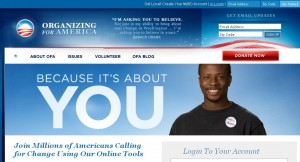A few days ago, Ryan Holliday posted an article on BetaBeat about the Fakery of Brands on Reddit. I'm a longtime and active Reddit user, and I disagree with a lot of his article, and the idea that Reddit users will be so easily fooled by marketing trickery here. It's tough to even MENTION a brand without getting a /HailCorporate comment (the fact that the author refers to "HailCorporate" as a tag indicates he doesn't really use Reddit, either).
The examples he cites probably aren't examples of brands trying to work their way in there. If he'd read the comments or had a better idea of how the Reddit community worked, he'd know this. In the example of the Audi image, many of the commenters clearly point out that a.) it uses the wrong font for Audi b.) it uses an unlicensed poster from Lord of the Rings c.) the Photoshop job is incredibly amateurish. In the example of Subaru getting their content to the front page, the author of that article fails to take into account that it's unlikely Subaru (Canada, Japan, America) would use the username "GodFree."
Similarly, his "TIL" (Today I Learned") examples are weak. People are sharing these things because they are interesting. I didn't know that Volvo invented the 3 point seat belt, but it's a cool fact.
Sometimes good content bombs on Reddit. Sometimes weird shit makes it to the top. There's no hidden corporate conspiracy like this guy makes it out to be.
My Favorite Reddit AMAS:
The Good:
The team behind the Mars Curiosity Rover:
Why was it good? They used the strength of their team, and showcased their uniqu personalities and areas of expertise to answer questions. Being engineers/etc, they didn't shy away from really technical questions
Why was it good? Louis was just Louis, and like all of his projects it showed how human he is, spelling mistakes and all.
Why was it good? Although it was obviously done the same day as the Old Spice "Muscle Music" Vimeo launch to promote the deodorant, Terry didn't just stick to Old Spice-related questions. As with Louis CK, he was simply himself.
My personal favourite: The owner of a cardboard box factory:
Why was it good? Although probably inspired by the Simpsons episode where they go to a cardboard box factory, it was still a great IAMA on what could have been an otherwise boring topic. He was very patient with the questions, even though he had never seen the episode, went into a ton of detail and kept answering questions long after the standard one-day of IAMAs.
The Bad:
Why was it bad? He only focused on the current film he was promoting. He only answered a few questions from fans, and kept trying to steer the conversation back to the movie "Rampart."
The Other:
An Apple Employee who likes his job:
Why was it meh? It wasn't an officially sanctioned Reddit, but it wasn't particularly enlightening either. Interesting that a lot of the questions went right to the "ethics" of Apple (FoxConn factory employees, etc), even though the guy doing the Reddit was just an employee at the genius bar. Notable as our
Some Reddit Stats
10% of Reddit users are Canadian, so that works out to 3.4 million YEARLY unique Canadian visitors.
The main problem with getting this data from Reddit is that there isn't really anyway to track these users. Reddit doesn't ask for ANY user details, they don't have an ad network. You don't even need an email address to register.
Otherwise, your best bet for data is this blog post. It's self reported data (well, I guess so is Facebook), and focuses on things like what the favourite cheese of Redditors is. Pingdom also has some interesting data which says that 65% of Redditors are male and 58% are under the age of 35.
More information can be found in this blog post about the demographics of Reddit and this blog post about traffic to Reddit.
-Parker




 The Obama camp did a great job of this. MyBO (
The Obama camp did a great job of this. MyBO (